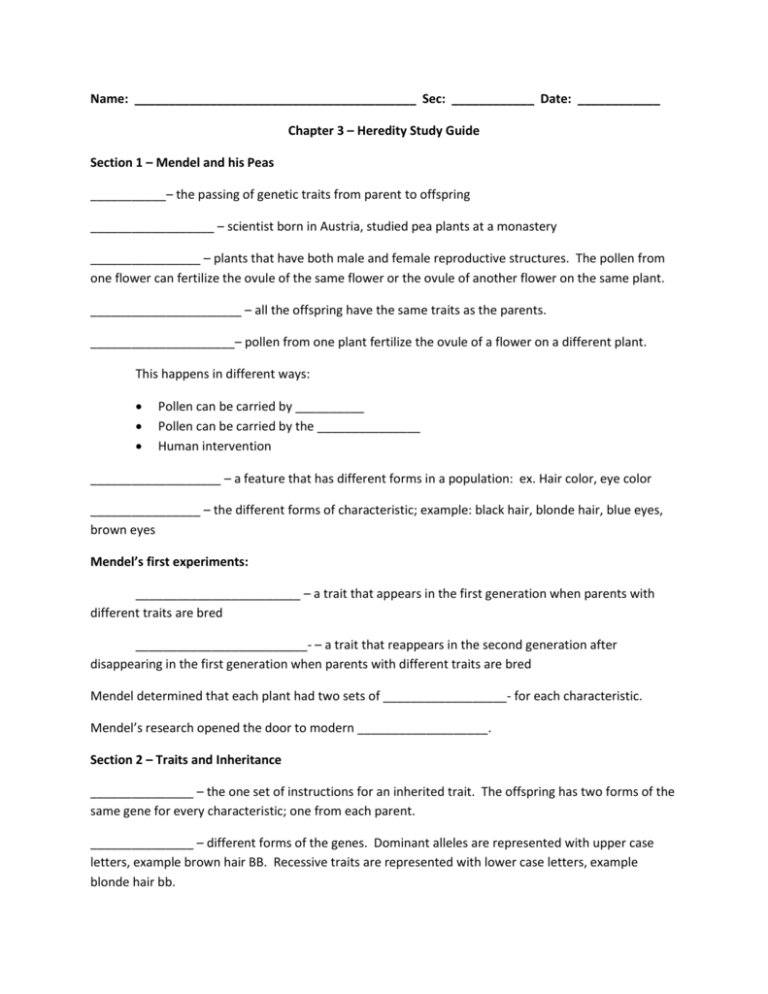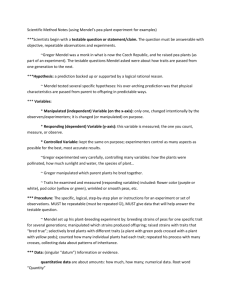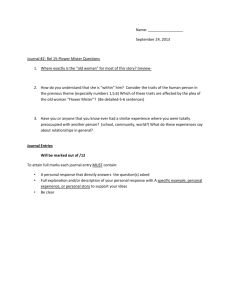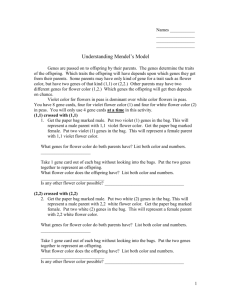Chapter 3 Study Guide
advertisement

Name: _________________________________________ Sec: ____________ Date: ____________ Chapter 3 – Heredity Study Guide Section 1 – Mendel and his Peas ___________– the passing of genetic traits from parent to offspring __________________ – scientist born in Austria, studied pea plants at a monastery ________________ – plants that have both male and female reproductive structures. The pollen from one flower can fertilize the ovule of the same flower or the ovule of another flower on the same plant. ______________________ – all the offspring have the same traits as the parents. _____________________– pollen from one plant fertilize the ovule of a flower on a different plant. This happens in different ways: Pollen can be carried by __________ Pollen can be carried by the _______________ Human intervention ___________________ – a feature that has different forms in a population: ex. Hair color, eye color ________________ – the different forms of characteristic; example: black hair, blonde hair, blue eyes, brown eyes Mendel’s first experiments: ________________________ – a trait that appears in the first generation when parents with different traits are bred _________________________- – a trait that reappears in the second generation after disappearing in the first generation when parents with different traits are bred Mendel determined that each plant had two sets of __________________- for each characteristic. Mendel’s research opened the door to modern ___________________. Section 2 – Traits and Inheritance _______________ – the one set of instructions for an inherited trait. The offspring has two forms of the same gene for every characteristic; one from each parent. _______________ – different forms of the genes. Dominant alleles are represented with upper case letters, example brown hair BB. Recessive traits are represented with lower case letters, example blonde hair bb. ______________ – the physical appearance of an organism. Example: purple flower, white flower, yellow flower ___________________ – the genetic makeup of an organism or combination of genes for one or more traits. Example: Purple flower PP or Pp _____________________ (same) – a gene with two dominant or two recessive traits. Examples: PP or pp ___________________ (different) – a gene with one dominant and one recessive allele. Example: Pp or Bb _____________ ___________ – used to organize all the possible combinations of offspring from particular parents. Exceptions to Mendel’s principles: Incomplete dominance/ codominance – ______________________________________. Example: snapdragon flower One gene, many traits – _________________________________. Example: the white tiger’s fur color and eyes are influenced by the same gene. Many genes, one trait – _________________________________________. Examples: different combinations of alleles result in different eye color shades. Section 3 – Meiosis _______________ __________________– chromosomes that have the same sequence of genes and have the same structure. ______ _______________________ – one of the pair of chromosomes that determine the gender of an individual. Females have two X chromosomes; XX, and males have one X and one Y chromosome; XY. ____________ _____________ _______________ – certain disorders that are associated with the gender of an individual. The gene is recessive, therefore, males are more likely to have sex-linked disorders because they only have one X chromosome, whereas females have two. Examples: color blindness and hemophilia ________________ – a diagram made by a genetic counselor that shows the occurrence of a genetic trait in many family generations. _______________ ________________ – organisms with desirable characteristics are mated to form offspring. Examples: chickens bred to produce larger eggs, roses bred to produce larger flowers.









![Biology Chapter 3 Study Guide Heredity [12/10/2015]](http://s3.studylib.net/store/data/006638861_1-0d9e410b8030ad1b7ef4ddd4e479e8f1-300x300.png)
